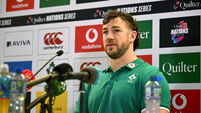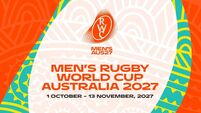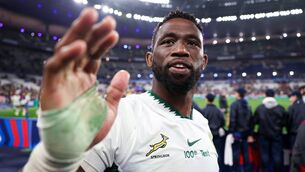Not All Black and white
The Barbarians side was made up exclusively of players from the southern hemisphere, including rising stars Schalk Burger and Matt Giteau.
The All Blacks fielded a second string side with only Mils Muliaina and Doug Howlett surviving from the team that thrashed France 45-6 the previous weekend. The average age of the New Zealand team was 24.
Watching the All Blacks perform the Haka, my mind strayed to next summer’s Lions tour. On the evidence of the autumn tests, how would the Lions fare? What would the likely test combination be? Picking the Lions squad and test side is an exercise that will attract hours of debate in pubs and clubhouses around Britain and Ireland in the next six months.
Given that the Lions squad will comprise an unprecedented 44 players, the pub debate will revert to a question of who isn’t going to make it. The selection of the test side is far more challenging.
Ten days ago in Paris, the All Blacks produced the most complete performance of the autumn series in their demolition of France. The quality of the victory has to be tempered somewhat by the abject failure of the French to compete. Given that Bernard Laporte’s side produced a magnificent display in defeating Australia two weeks earlier, it is difficult to fathom what goes on in the minds of the French players.
That said, one could only watch in awe at the ability of the New Zealand players to operate under pressure. The skill levels of both backs and forwards were outstanding. However, given that injury to Sylvan Marconnet and Peter De Villiers necessitated the introduction of uncontested scrums early in the second-half, questions over the New Zealand front five remain unanswered.
The other problem position for New Zealand in recent times has been the lack of a consistent performer at out-half. In the World Cup the mercurial talents of Carlos Spencer were employed in this position. Brilliant player though he is, Spencer lacks the kicking game to control and influence an international test. Recognising this, Graham Henry has reintroduced Andrew Mehrtens to the squad. While both players were used in the Tri Nations, it is clear that Henry remains unconvinced about their respective merits.
On the autumn tour, Spencer and Mehrtens were rested, with the No 10 jersey going to Daniel Carter. Given that he won his previous 14 caps in the centre; this constituted something of a gamble. Henry need not have worried. Against France, Carter was outstanding. At only 22 years of age, it remains to be seen whether he has the experience to stand up to the requirements of the pivotal position in a test series against the Lions. The evidence to date would suggest that he has.
The success of the Carter positional switch and the composition of the New Zealand front five will be the factors that decide if the All Blacks can win the series. It will be interesting to see how those areas develop in the coming months.
For the Lions to win the series, they must dominate New Zealand up front.
This will be more important given the adverse weather conditions that are likely to prevail in the New Zealand winter.
Without the ball, there is not much that Rokocoko, Howlett, Muliaina and co can do.
While Wales were synonymous in the past with the production of world-class out-halves, the All Blacks have this facility when it comes to producing back row forwards. Over the course of my career, the All Blacks had three No 8s - the outstanding Murray Mexted was replaced by Buck Shelford, who in turn made way for Zinzan Brooke. At open side they have produced a lineage over the last 25 years of Jock Hobbs, Michael Jones, Josh Kronfeld and the current incumbent Richie McCaw.
Against France, McCaw gave a master class in back row play. Playing at No 7, he performed the basic requirements with the efficiency of Neil Back at his best. In addition he gave an accomplished display in the lineout and was also one of the All Blacks most potent ball-carriers.
For good measure, his tackle count was the highest of the New Zealand players. He is the complete back row forward and for my money, is the best forward in the world game. Given that he doesn’t celebrate his 24th birthday until New Year’s Eve, he has a phenomenal career ahead of him.
Last Saturday, the man of the match award went to the young back row forward who last week received the IRB U21 player of the year award, Jerome Kaino.
Given that the Barbarians’ back row consisted of Burger, Xavier Rush and Phil Waugh, this was some achievement.
He is an awesome talent. While he is unlikely to face the Lions, he is a player certain to make his mark on the international stage in the near future.
Speculating on the composition of the Lions test side is a moot exercise, because one never knows how a player adapts to the demands until you see him train on a daily basis. Players also reach their peak at different stages of the season and as a result today’s composition will vary significantly with that selected next July.
Injury will also play a major part. However, under pressure from the sports editor, I have succumbed to the challenge.
Given that Jonny Wilkinson has only played three games in 13 months and that a medial ligament injury is almost certain to rule out Richard Hill, I have not considered either for selection.
The most contentious areas are scrum-half and the composition of the back row. Steve Thompson’s selection is subject to satisfying doubts about the consistency of his lineout throwing. No more caveats - let the arguments begin!















